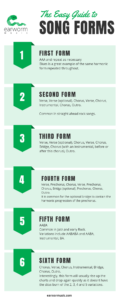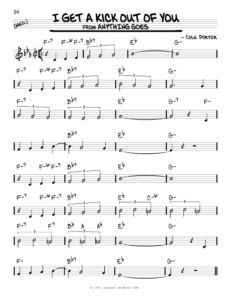Interview With Stuart Stuart (Sheppards Producer)
Edited by Peter Muldoon – Original article appeared in MouthzOff Magazine iss 13, 2 April, 2014
He started out like many musicians, gigging and messing around with a 4-track recorder ; he produced the early recordings of The Veronicas, which lead to a US deal with Warner Music and international success; and now his work with Sheppard has garnered an Aria nomination for ‘Let Me Down Easy’ and across the board airplay for their latest single, ‘Geronimo’.
Early Days
Stuart Stuart is known around Brisbane as producer with a real passion for all styles of music. He has been playing guitar since age nine, started working with computer sequencers at age fourteen and by the end of high school was recording with a four-track. While pursuing a career in advertising, he was gigging as part of a duo and by necessity, learned about sequencing midi tracks with 1 sequencer and 1 keyboard the hard way. By 22 he was a full-time musician and progressed to having his own studio on the Northside of Brisbane where many interstate artists travel to record.
A veteran user of Cubase, Stuart also isn’t a massive gearhead, preferring to really know the few items he does use, like the Joe Meek preamp that takes pride of place in his minimalist rack. His microphone collection is similarly tidy with a strong preference for Rode, with the NT2 usually working well for female voices and Classic for male voices. He also loves the sound of the UAD cards from Universal Audio and Waves plugins as he mixes his productions ‘in the box’.
“I’m always just trying to surprise myself… my approach is that I can’t stand still and keep doing the same thing.”
Stuart Stuart
His deal with Mushroom Records producing dance music eventually lead him to collaborating with other artists and later using his keen ear and multi-instrumental ability to produce other artists. Using these skills, he worked with The Veronicas from the ages of 15 or 16 and was instrumental (pun intended) in their rise to fame and subsequent work with renowned international hit-makers, Max Martin and Dr Luke.
Talking about his wide taste in music and artists he works with, he says “I’m always just trying to surprise myself… my approach is that I can’t stand still and keep doing the same thing.” It is this ethos that saw him start working with Sheppard in 2011.
Shepparding in a new era
Sheppard is a 6 piece ‘alternative pop’ group from Brisbane, Managed by industry heavyweight Michael Chugg. Made up of three siblings – George, Amy and Emma Sheppard, and three friends – Jason Bovino, Michael Butler, and Dean Gordon. Their sounds that are reminiscent of a beach party have visited South Africa, the UK, India, Bali, and the US twice.
“Pretty much from the first song I realized that this was the best thing I’d worked on in ages…”
Stuart Stuart
Platinum selling and Aria Best Independent Release nominated Let Me Down Easy, has been blasted on commercial radio and TV, and as George describes it, features ‘emotional , heartfelt lyrics of a man who has just had his heart broken, but it’s being sung to an incredibly catchy, happy sounding melody!’
Prior to working with Stuart, the band had a bad experience with a previous producer and had to scrap an entire album. This turns out to be a smart move, as Stuart explains, “Pretty much from the first song I realized that this was the best thing I’d worked on in ages…” . The disparate influences of each of the production team of Jay, George and Amy with Stuart combine to make records that take it from the hipster to the suburbs – commercial indy that features group vocals, acoustic guitars, hand claps and infectious electronic rhythms.
Early on, a typical workflow for production on a song would take a day, whereas now the perfectionist nature of the team can mean that they spend ten days and up to three versions of song that doesn’t even make the final cut.
The team worked on Let Me Down Easy in mid 2012 and made some pretty radical decisions early on – they banned snare drums in the production and only used hand-claps to contribute to the signature sound of acoustic guitars and group vocal lines. They used a fairly typical workflow by starting with the demo and recorded the drum track (sans snare) to build the rest of the track upon.
Geronimo

The upcoming album is being whittled down from an initial list of 40 songs and is more detailed in it’s production, as can be heard in the new single currently being played across the board on B105. Stuart broke it down for me and shared what each of the 150 tracks added to the sound of the most requested song.
“We really had a surplus of ideas…” as he explained the process, starting with the kick and acoustic guitar and continuing the layering with a surprising sound added to the rhythm of the acoustic guitar – knee slaps recorded by Jay and George. The acoustic guitars were recorded with one of his favourite techniques, a spaced stereo pair of NT2s while a number of the electric guitar parts had multiple effects including delay to give a spacey ambient sound.
A major difference with this song is that the band played the song live on tour before they had finished recording, whereas the songs are normally finished before the rest of the band come in and work out how they are going to replicate it live. And for that reason the electronic drums that were already laid down, were then augmented with live drums at the end and then mixed with predominantly room mics and the occasional spot mic blended in for the snare.
The vocals were recorded in the vocal booth with the Rode Classic, while the group vocals and other hooks were recorded in various rooms for different sounds. One of these is the “bombs away” hook that particularly impressed Stuart. The amount of layering and craft in these sessions is astounding and the end result is a catchy pop recording that contains enough subtlety and surprises to withstand multiple listens and is obviously proving popular across commercial radio, both here and overseas.

The Author
Sonic Edwards
Sonic is the author of two very dry books on Scale Fingerings for Bass Guitar.
He is also an in demand session musician and educator.



